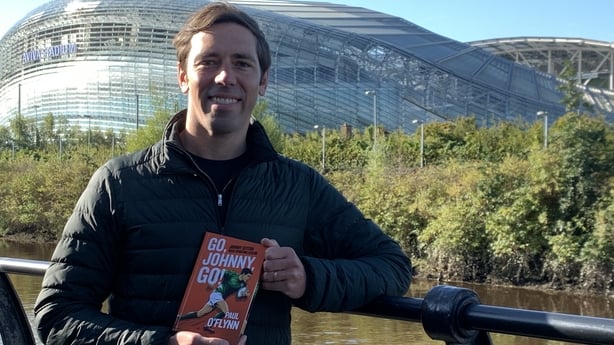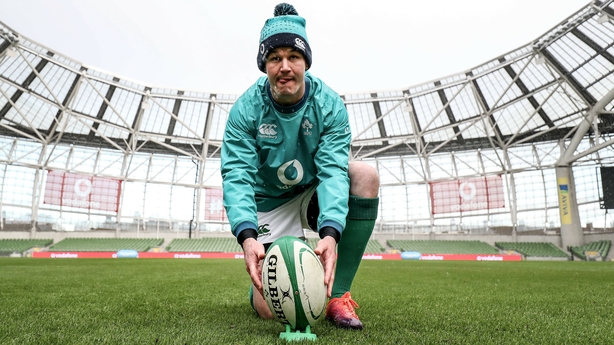RTÉ journalist Paul O'Flynn discusses his new book Go, Johnny, Go!, the first in a new series of children's books on Irish sporting legends, following the career of Irish rugby great, Johnny Sexton.
To write a children's book you first have to think like a child. When I cast my mind back to my primary school days, I remember scanning the scantily stacked shelves of the library, speckled with old battered and bruised Penguin classics, most likely hand-me-down donations from parents and teachers.
Adult books that didn’t exactly grab the imagination of young eyes. On one occasion, John Steinbeck’s The Pearl shimmered at me from a dusty pile in the corner of the cloakroom we called the library. Impressed by the picture on the front cover, I peeled it open and began to put the words and sentences together. I read it, as such, but it didn’t have any meaning. It felt like a task to be completed. Not something to be enjoyed.

I was a sports-mad young boy with a rugby ball for a brain but little talent in my feet to match. I wanted to read stories of my heroes on the pitch. People my age doing extraordinary things. This is the place I had to bring my mind to when I began to write Go, Johnny, Go!.
The story of Johnny Sexton has all the ingredients to make a great children’s book. The one I wanted to read when I was a boy. A talented young athlete with the world at his feet, shining on the schools rugby stage. Before the hard knocks of life start coming and his childhood dream, like a dropped ball, appears to slip from his grasp. But through hard work and determination he fights for what he has always desired and becomes the star player for his beloved Leinster and Ireland.

The book is for everyone but is specifically written to appeal to reluctant young readers. The publishers Gill Books and I worked with the Dyslexia Association of Ireland to do everything we could to make it as accessible as possible. One in ten people in Ireland have dyslexia. That means on average three pupils in every class will have difficulty reading. The key to helping them is to make them realise they’re every bit as smart as their classmates, it’s just that their brain just works in a different way. Encouraging a young person with dyslexia to read can be like asking somebody who is bad at art to draw every day. They try to avoid it and find ways to get out of it as a means of escape.
The story of Johnny Sexton has all the ingredients to make a great children's book. The one I wanted to read when I was a boy.
Research shows the way to avoid this is to offer material that children want to read. A subject matter they can really engage in. So what better than the story of Johnny Sexton, one of Ireland’s greatest ever sports stars?
The sentences are short, sharp and engaging. The action comes thick and fast on the pitch. And then there’s the secret look behind the scenes. The imagined conversations that bring the reader into the heart of the dressing room and inside Johnny’s head at the pivotal moments in his rugby career.
The font is designed specially and the words are spaced to make every sentence easy to read and the key moments stand out in bold. The idea is to engage young minds in a sporting tale that captures their imagination to the point they don’t even realise they’re reading, and hopefully spark a lifelong love of books.
The idea behind Go, Johnny, Go! was to produce a book that would shine on the shelves, not like The Pearl. A story to inspire young minds beyond the picture on the cover. I think, I hope, the 8-year-old me would have loved it.

Go Johnny Go! by Paul O'Flynn (published by Gill Books) is out now.

